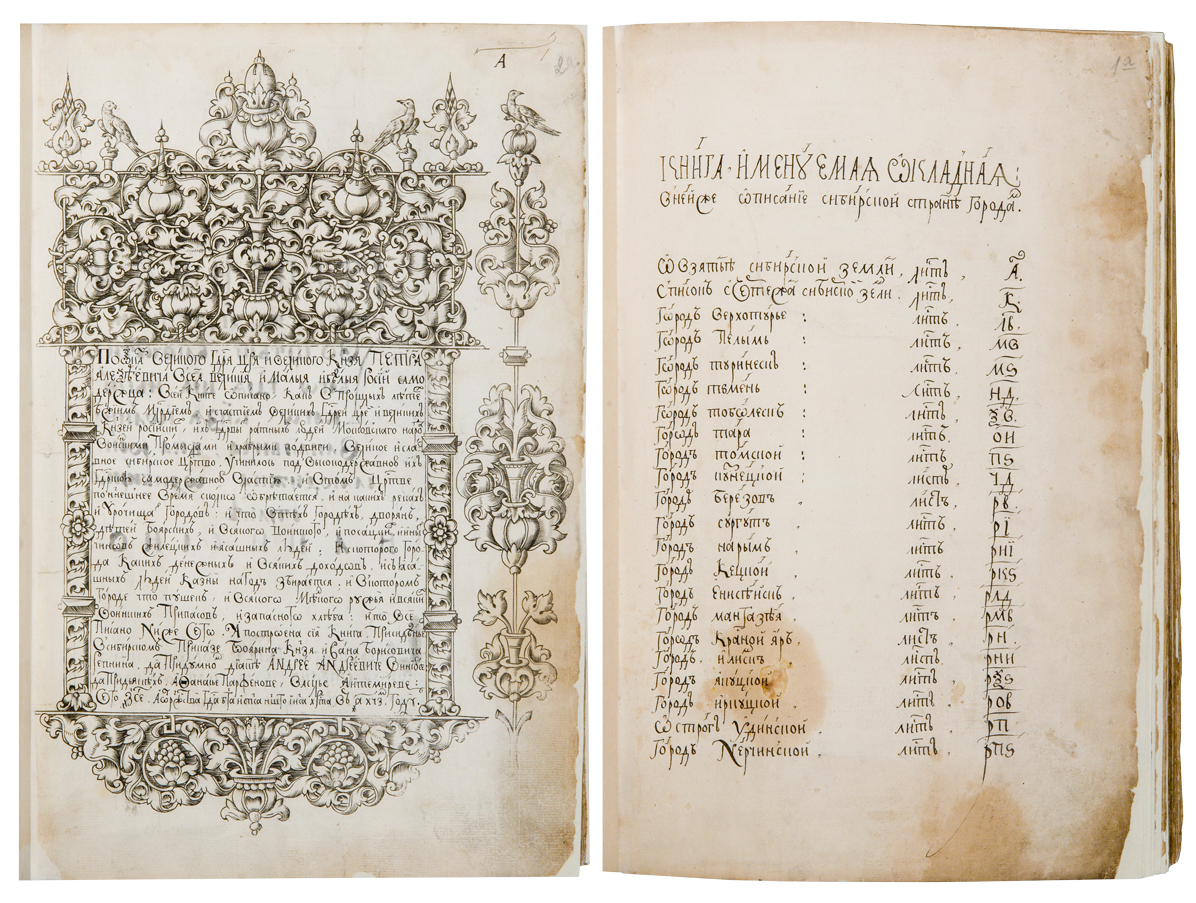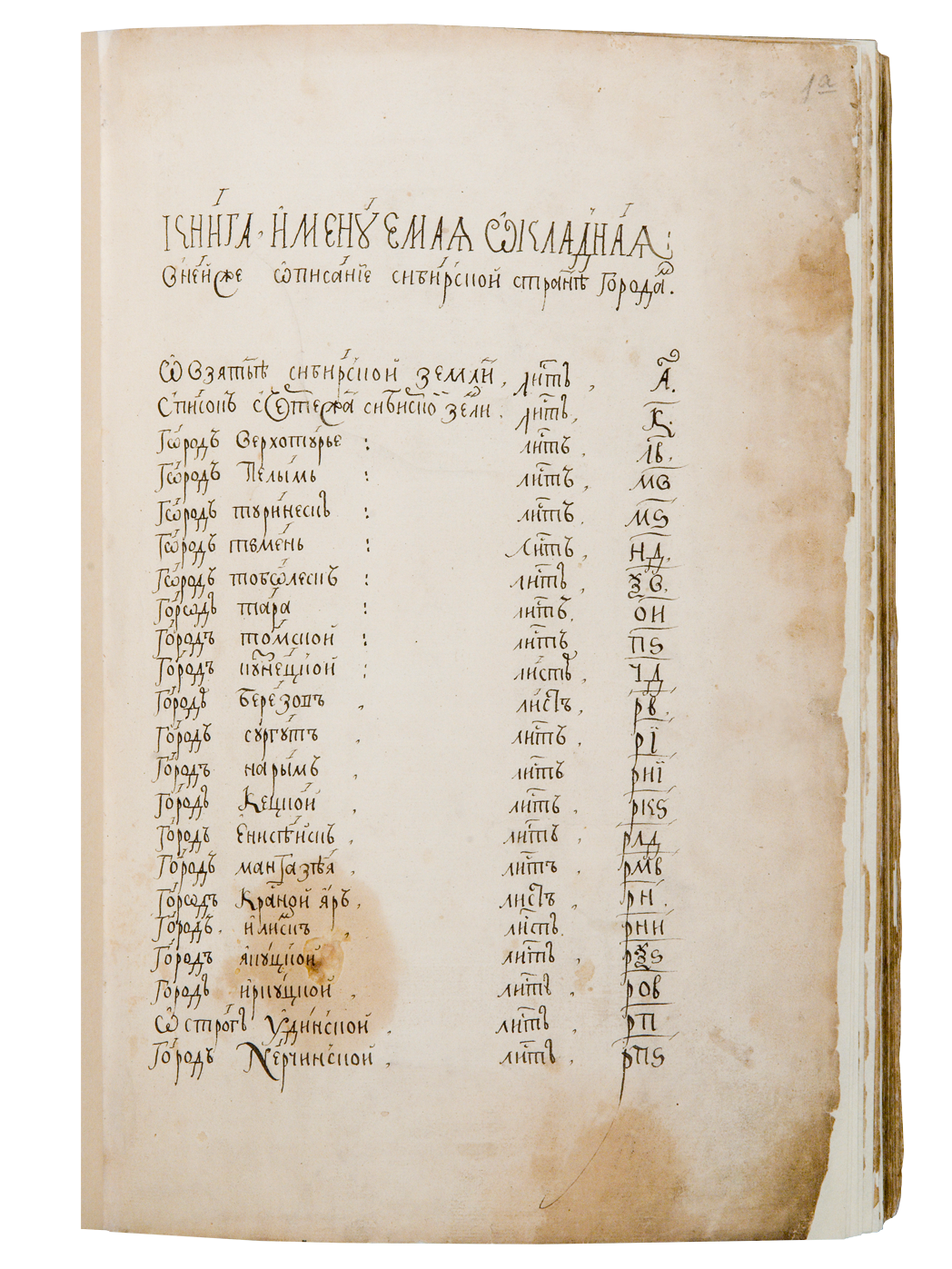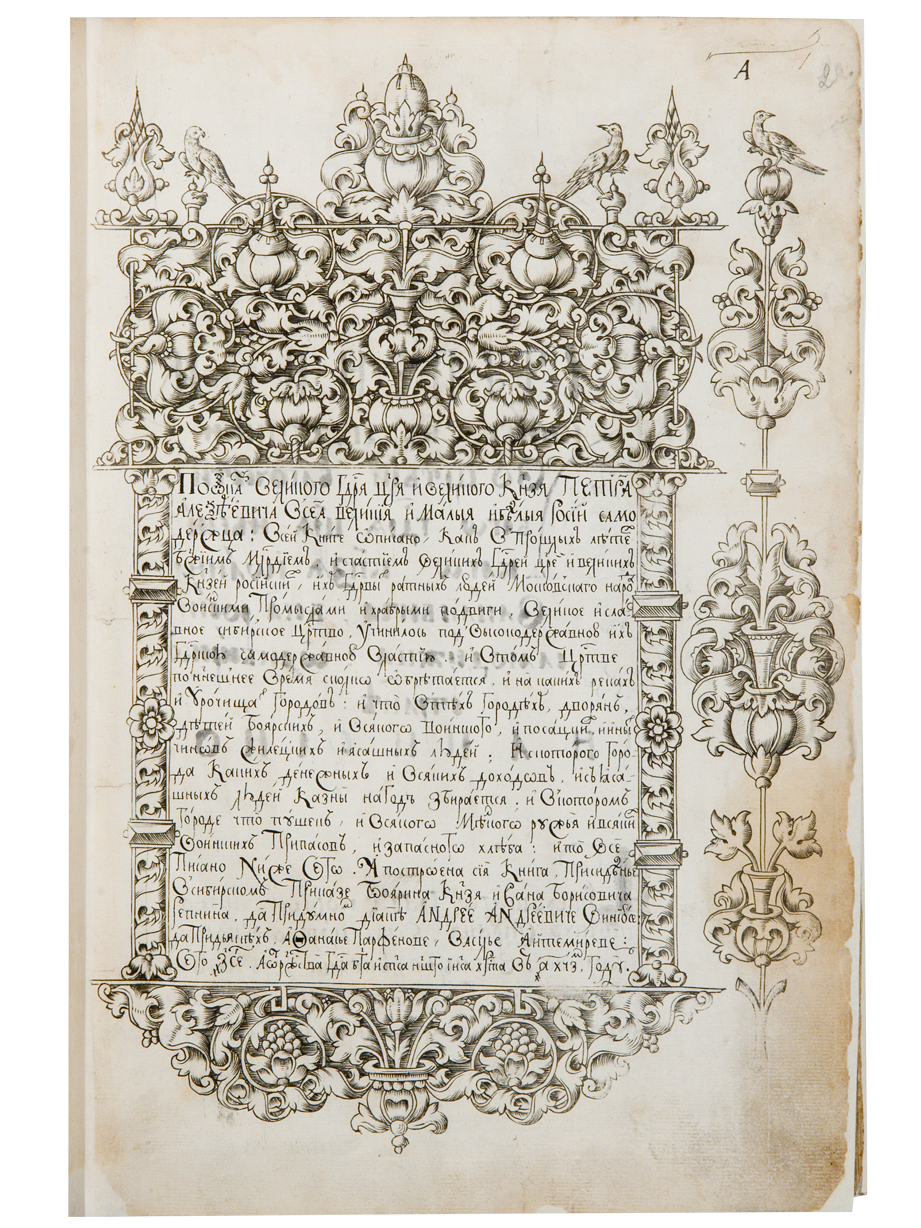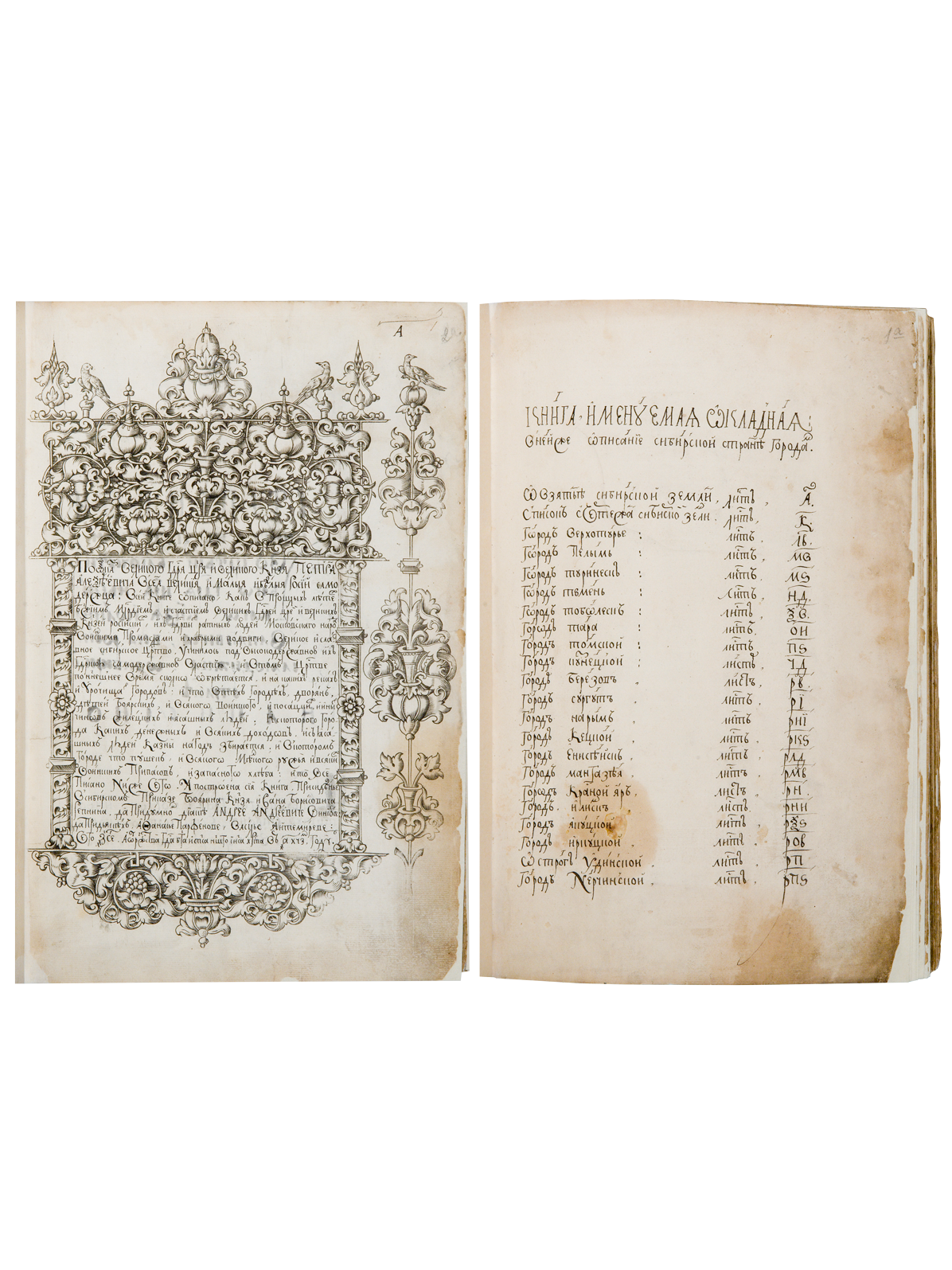OKLADNAYA (TAX) BOOK OF SIBERIA OF 1697




The book was compiled by order of Tsar Peter I in the Siberian Prikaz (chancery) – the central government institution that controlled Siberian lands in the XVII century. On the title page of the book, which reveals in detail its contents, among the employees of the Siberian Prikaz, during whose time this book was made, a Duma clerk Andrei Andreevich Vinius (1641–1717) – a statesman, diplomat and collector - was highlighted. Researchers suggest that it was Andrei Andreevich Vinius who initiated the writing of the Okladnaya (Tax) Book of Siberia in 1697.
Such books were made for taxing the population. Unlike other Tax books of the Siberian Prikaz, containing information on particular cities or certain types of salaries received by Siberian servicemen, the Tax Book of 1697 is, in fact, an encyclopedic reference book. The book contains information on the history of the conquest of Siberia, a description of nineteen cities with geographical location, a detailed list of population groups, their income and expenses. Data on the number of weapons and military supplies in each city is given. The description and images of customs and city seals are especially interesting.
The book is divided into three parts. It begins with the history of the conquest of Siberia. The second part is a geographical description of Siberia and partly of neighboring countries, in particular, China. The third and the most valuable part of the book contains a detailed description of all Siberian cities. The description of each city is provided by the following scheme: first of all, information on the transport situation of the city is given, on which river it stands and how far it is from neighboring cities. The distance in this case was calculated in days of journey and often stated separately for summer and winter time, for travelling upstream and downstream, for travelling light or with a wagon train. The description of the city is added by images of cities (voivodship) and customs stamps. Plots of these seals are quite similar and represent territories as a source of fur supply. It should be noted, that most of plots of voivodeship seals of Siberian cities are also used in the modern heraldic emblems of the corresponding territories.
The book indicates the number of service-men and monetary, bread and salt salaries that were owed to them, with specified information which part of these salaries was sent from Moscow and which was formed from local incomes. The number of townspeople on quitrent and the amount of dues paid by them, the number of peasant households and the number of tax-paying peasant population, the size of their spring-planted and winter-planted land and the size of the crop, the number and tribal composition of the yasak population, the amount of yasak imposed on them, as well as the amount of actually paid and annual unpaid balance are provided next.
The description of the city ends with a detailed list of all available weapons, both serviceable and needing a repair, firearms and cold weapons, stocks of cannon balls, gunpowder and lead, other substances used in military affairs. Such detailed lists are given not only for each city, but also for stockades and slobodas (large villages) subordinate to these cities.
After separate descriptions of all nineteen Siberian cities and the Udin stockade, the Tax book is completed with the summary list throughout whole Siberia. The total number of service-men occupying each post, owed to them monetary, bread and salt salaries; the total number of tradespeople, quitrent gainers, yamschiks, peasants on quitrent and plow peasants; consolidated income, including jasak (tax), and expenses, are presented. According to the Tax Book in 1697 "in total in Siberia all kinds of officials of the Russian people and foreigners who were under the authority of the great sovereign, were 63,115 people."



